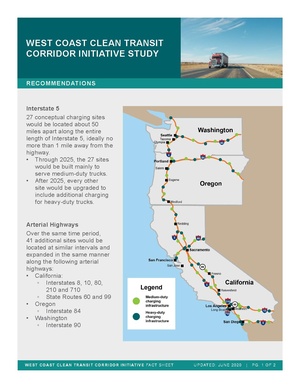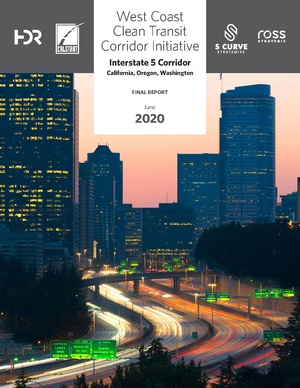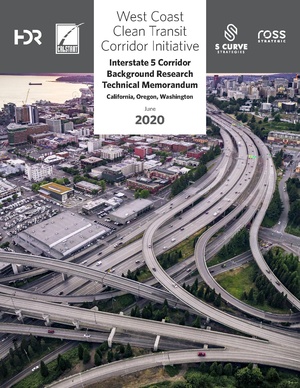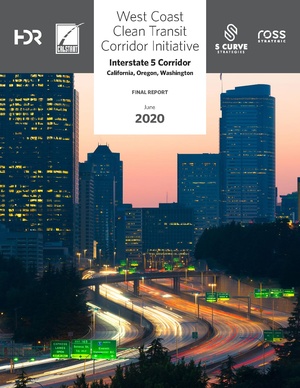West Coast Clean Transit Corridor: Difference between revisions
No edit summary |
No edit summary |
||
| Line 11: | Line 11: | ||
Organizations interested in partnering with utilities to build or upgrade their sites along the I-5 corridor are encouraged to connect with the appropriate utility. Contact information for each utility can be found at the bottom of this page. | Organizations interested in partnering with utilities to build or upgrade their sites along the I-5 corridor are encouraged to connect with the appropriate utility. Contact information for each utility can be found at the bottom of this page. | ||
;Fact Sheet | |||
[[File:G20-049 West Coast Clean Transit Corridor Fact Sheet.pdf|300px|Fact Sheet]] | |||
;Study | ;Study | ||
[[File:WCCTCI Report June 2020.pdf|300px|WCCTCI Report]] [[File:WCCTCI Tech Memo June 2020.pdf|300px|WCCTCI Tech Memo]] [[File:WCCTCI Executive Summary June 2020.pdf|300px|WCCTCI Executive Summary]] | [[File:WCCTCI Report June 2020.pdf|300px|WCCTCI Report]] [[File:WCCTCI Tech Memo June 2020.pdf|300px|WCCTCI Tech Memo]] [[File:WCCTCI Executive Summary June 2020.pdf|300px|WCCTCI Executive Summary]] | ||
Revision as of 20:02, July 28, 2022
| West Coast Clean Transit Corridor | |
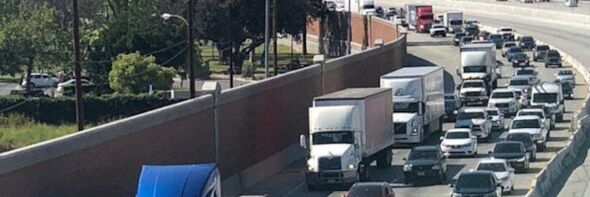 I5 Traffic | |
| Team Organizations | Los Angeles Department of Water & Power Northern California Power Agency Pacific Gas & Electric Company Pacific Power Portland General Electric Puget Sound Energy Sacramento Municipal Utility District San Diego Gas & Electric Company Seattle City Light Southern California Edison Southern California Public Power Authority |
| Point of Contact | |
| Participating Municipalities | Washington Oregon California |
| Sectors | Transportation |
| Initiative | |
| Status | Concept only Stage |
| Last Updated | December 17, 2025 |
Summary
The West Coast Clean Transit Corridor Initiative is an ongoing, collaborative effort among 16 utilities to support the development of electric vehicle charging facilities along I-5, from San Diego to British Columbia, for heavy- and medium-duty freight haulers and delivery trucks.
Following an initial June 2020 report outlining conceptual charging sites, the West Coast utilities are conducting grid readiness assessments in preparation for infrastructure installations and upgrades that will support vehicle charging capacities of at least 3.5 megawatts with potential for further upgrades to create even higher-power sites.
Organizations interested in partnering with utilities to build or upgrade their sites along the I-5 corridor are encouraged to connect with the appropriate utility. Contact information for each utility can be found at the bottom of this page.
- Fact Sheet
- Study
